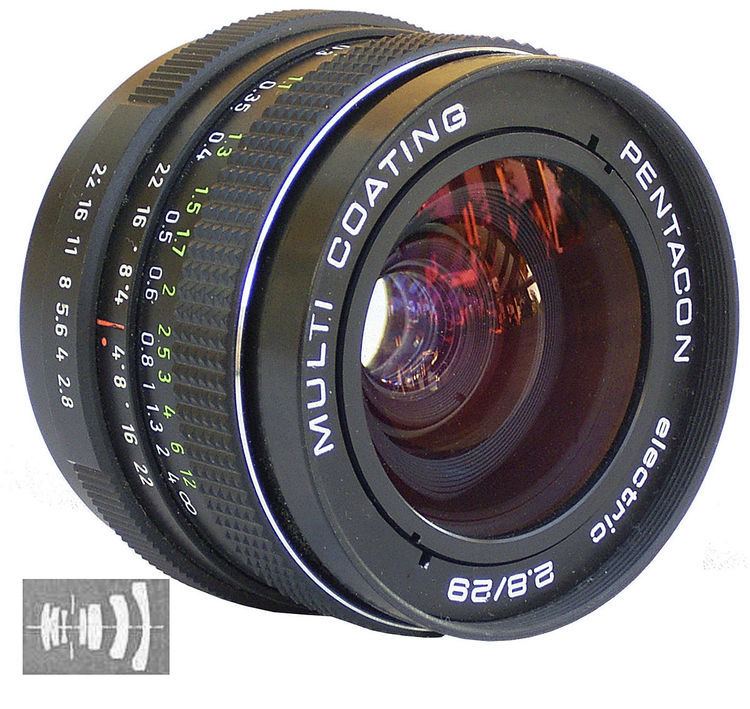 | ||
In film and photography, a prime lens is either a photographic lens whose focal length is fixed, as opposed to a zoom lens, or it is the primary lens in a combination lens system.
Contents
- As alternative to zoom lens
- Traditional meaning as primary lens
- Popular focal lengths
- Specialist lenses
- References
Confusion can sometimes result due to the two meanings of the term if the context does not make the interpretation clear. Alternative terms primary focal length, fixed focal length, and FFL are sometimes used to avoid ambiguity.
As alternative to zoom lens
The term prime has come to be used as the opposite of zoom; that is, a prime lens is a fixed-focal-length, or unifocal lens, while a zoom lens has a variable focal length.
While a prime lens of a given focal length is less versatile than a zoom, it is often of superior optical quality, wider maximum aperture, lighter weight, smaller size. These advantages stem from having fewer moving parts, optical elements optimized for one particular focal length, and a less complicated lens formula which means that they suffer from fewer problems of optical aberration. The larger maximum aperture (smaller f-number) allows photography in lower light, and a shallower depth of field.
A normal lens or "normal prime" is a lens with a focal length about equal to the diagonal size of the film or sensor format, or that reproduces perspective that generally looks "natural" to a human observer under normal viewing conditions.
Traditional meaning as primary lens
An alternative and apparently somewhat older meaning of the term prime lens is the main lens in a combination lens system. When the camera lens is used with some other optical device, such as a close-up lens, teleconverter, or teleside converter, the camera lens itself is properly called the prime lens. Prime is here used in the sense of primary, chief, original, first in order, etc.
Lens manufacturers such as ARRI Media, ISCO Precision Optics, Schneider, Carl Zeiss AG, Canon and others still make variable focal length cine and video lenses regularly catalogued as variable prime lenses. A variable prime is sometimes distinguished from a "true zoom" in that the latter maintains focus as the focal length is varied.
This use of the term "prime lens" is an example of a retronym. Early in photography only primary camera lenses were available, and were merely called "lenses" or "objectives". Later, "auxiliary" lenses were available, which usually fit in front of the front element of the primary, or "prime" lens.
Popular focal lengths
Many lens manufacturers produce or produced prime lenses at or near the following focal lengths: 20 mm, 24 mm, 28 mm, 35 mm, 40 mm, 50 mm, 85 mm, 105 mm, 135 mm, 200 mm, 300 mm, 400 mm, and 600 mm. For these lengths many manufacturers produce two or more lenses with the same focal length but with different maximum apertures to suit the different needs of photographers. Additional focal lengths can be created by using a teleconverter.
For 35mm film and full frame digital cameras (in which the image area is 36 by 24 millimeters) prime lenses can be categorized by focal length as follows:
Specialist lenses
Some specialist lenses are only available as prime lenses due to design or cost constraints. Examples of such specialist lenses are: extreme telephoto or wide angle, lenses with tilt and / or shift function, lenses with large apertures and macro lenses.
